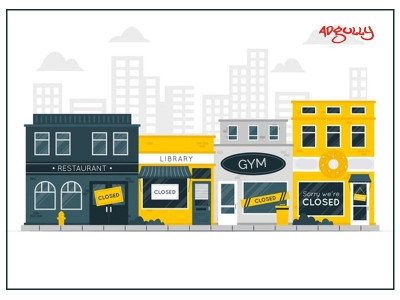Redefining brand activation by driving personalized customer experiences
Authored by Amit Srivastava, CEO, Smollan India
No matter what industry your business belongs to, there are two key buzzwords that may be echoing across the market segment — personalization and brand activation. Digital brand activation solutions powered by innovative and personalized technology are undoubtedly the future. In the retail industry, too, things are no different.
From tried and tested techniques like product sampling and demos, to more inventive strategies like experiential technology and virtual reality, there are many ways in which you can connect better with your customers today.
When done right, these aspects help redefine brand activation - the process by which you can increase awareness about your brand among your target audience - for the businesses of today.
How has brand activation evolved over the years?
Brands have been around for centuries now, and so has brand activation. Before technology emerged as the great disrupter, brand activations were primarily achieved through conventional channels like in-person engagement and promotional campaigns. The 20th century also saw a growing preference for channels like product sampling and experiential marketing among brands keen on making it big.
Now, as we get closer to the heart of the 21st century, brand activation has become increasingly digitized. Today, personalization and authenticity have emerged as the twin pillars to improve brand presence and drive brand activation for businesses across industries. But the key to using these factors to the advantage of your brand is choosing the right kind of brand activation strategy.
Why brand activation matters in the 21st century
To get your brand activation strategy right, it’s essential to first understand why brand activation matters today. The simplest and most fundamental reason, of course, is that brand activation accelerates lead conversion and drives sales. Perhaps because seeing is believing, in-store brand activation events can be particularly effective. As a report by the Event Marketing Institute revealed, around 98% of users are more inclined to make a purchase after they attend a brand activation event.
Brand activations and experiential marketing also create a positive ripple effect for your business. It strengthens your brand image and helps you build (and retain) lasting relationships with your target audience. Given the fast-paced nature of businesses today, customer loyalty is an irreplaceable asset to have — and a solid brand activation strategy could give you this advantage.
Brand activation by the aisle: How your business can attract and retain customers in-store
The best brand activation solutions can help you attract customers to your store, but in the short journey from the aisles to the checkout counter, you may lose many of them unless you have the right strategy. To convert shoppers into consumers, you need to focus on building your brand image within your stores.
Product sampling is a great way to get started. Setting up sampling counters closer to your checkout counters can drive more customers to the last mile easily. In-store demos and promotions also elevate the experience for people who visit your outlets in person. The trick is not just to draw shoppers in, but to also delight them by anticipating their expectations and then surpassing them. Strategies like personalized and need-based, consultative selling can also get you closer to effective brand activation.
By focusing on customer service across the journey from the aisle to the checkout counter, your brand can crack the code to retain customers easily. In fact, HubSpot Research found that around 93% of consumers may make repeat purchases from businesses that offer superior customer service.
Can technology help your brand activation campaign?
The short answer is yes. Technology is proving to be pivotal in making brand activation more effective by improving the level of personalization in both product-based and service-oriented customer experiences. Predictive analytics can also strengthen brand activation by forecasting what your customers may need. Brands today are also leveraging technology to redefine brand activation by increasing the personal touch at the Point of Sale.
Hyper-personalization is quickly catching up and surpassing mere personalization. Mobile Point of Sale (mPOS) terminals are especially relevant here, since they blur the lines between in-store and digital shopping even when the customer is physically present.
A guide for choosing the right strategy for brand activation
Epsilon reports show that around 80% of customers prefer brands that offer personalized experiences. And Hubspot reported that around 91% of consumers agreed they would be encouraged to purchase a product or service after participating in a brand activation experience.
That said, here are some ideas that can drive your brand towards successful activation.
- Conducting experiential marketing events to increase user signups for your product or service
- Organizing a trade show to create awareness among your target customer group at ground level
- Virtual events or physical events in-store to make your existing customers more aware of your entire range of product offerings
- Interactive events to build customer loyalty and improve customer retention
- Social media contests or in-store contests to drive engagement among your customers
You can build upon these fundamental tools with brand activation techniques that optimize the journey for your customers based on their real-time behavior. Personalization becomes easier if you have insights into your customers’ behavior and preferences. So, capturing customer data – both implicit and explicit - is also essential to successfully creating a personalized journey to drive brand activation.
Personalization: The need of the hour
The bottom line is that if you are keen to improve your business presence and become more successful at brand activation, a comprehensive strategy that incorporates the right techniques is the most crucial piece of the puzzle. You can also incorporate a personal touch at the most pivotal points of a customer’s journey in-store — like the product aisle, the checkout phase and the point of sale — and thus build up the customer's experience while simultaneously strengthening your brand’s presence in the market.







Share
Facebook
YouTube
Tweet
Twitter
LinkedIn